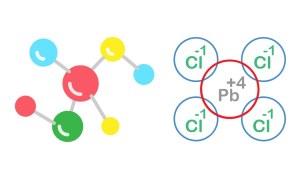Why is Whipped Cream a Colloid?
If you’ve ever enjoyed a dollop of whipped cream on top of a pie or in your coffee, you might have wondered about its texture and composition. Is it solid? Is it liquid? The answer is that whipped cream is a colloid—a fascinating mixture with special properties. But what exactly does that mean? Let’s dive in and explore why whipped cream qualifies as a colloid and what that tells us about its behavior and use in food science.
What is a Colloid?
To understand why whipped cream is a colloid, we need to first define what a colloid is. A colloid is a type of mixture in which one substance is dispersed evenly throughout another, but the particles are small enough that they don’t settle out over time. These particles are larger than molecules in a solution but too small to be seen with the naked eye. Colloids are everywhere in our daily lives, found in things like milk, mayonnaise, fog, and even in some medicines!
In a colloidal mixture, there are typically two phases: the dispersed phase (the particles) and the continuous phase (the liquid or medium). The particles in a colloid are finely spread out throughout the medium, and they remain suspended without settling because they are small enough to be held in place by the medium.
How Does Whipped Cream Fit the Bill?
Whipped cream is a perfect example of a colloid because it contains air bubbles (the dispersed phase) trapped in liquid cream (the continuous phase). When you whip cream, air is incorporated into it, forming tiny bubbles. The fat molecules in the cream surround the air and stabilize the bubbles, preventing them from popping or rising to the surface.
The key feature of whipped cream as a colloid is that it’s not a true solution, nor is it a pure solid or liquid. Instead, whipped cream exists as a foam, a specific type of colloid where gas particles (air) are dispersed in a liquid (cream). These tiny bubbles give whipped cream its light and airy texture, making it easy to spread and blend with desserts or drinks.
The Science Behind the Texture
When you whip cream, you’re introducing air into the liquid. The process creates a foam by trapping tiny air bubbles within the cream. The proteins and fats in the cream help stabilize these bubbles, preventing them from escaping. This gives whipped cream its fluffy, creamy texture. The more you whip the cream, the more air is incorporated, and the thicker the mixture becomes, forming the light and airy consistency that we associate with whipped cream.
Why Does Whipped Cream Hold Its Shape?
The reason whipped cream holds its shape is due to the structure of the colloidal mixture. The fat molecules in the cream cling to the air bubbles and act like a stabilizer, preventing them from popping easily. Additionally, the proteins in the cream, particularly casein, help stabilize the air bubbles and prevent them from merging or collapsing. The result is a fluffy, thick texture that holds its form for a period of time.
Colloids in Everyday Life
Whipped cream is just one example of a colloidal mixture, but colloids are essential in many other areas of life. For instance:
- Milk: It’s a colloidal dispersion of fat droplets in water.
- Mayonnaise: It’s a colloid where oil droplets are dispersed in water (usually with the help of an emulsifier like egg yolk).
- Paints: Most paints are colloidal mixtures where pigments are dispersed in a liquid base.
- Fog: Tiny water droplets dispersed in air create fog, a natural colloidal system.
Conclusion
Whipped cream is a delicious example of a colloid, where air is suspended in a liquid, forming a light and airy foam. The unique properties of colloids allow whipped cream to hold its shape, add texture to desserts, and create that luxurious feel in your mouth. The science behind colloids is at play in many other everyday items, from foods to medications, showing how important and versatile this type of mixture truly is.




Leave a comment